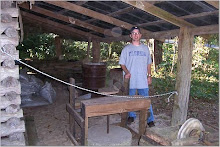Having read Displays of Power: Controversy in the American Museum from the Enola Gay to Sensation in the past I still find this book intriguing. Throughout this book Steven C. Dubin provides the reader with a great examination of all the distinct features that make up museums. Dubin provides the reader with some of the most controversial exhibitions of the decade of the 1990s. The museums mentioned in this book had exhibitions displaying such issues as slavery, religion, war with the dropping of atom bomb by Enola Gay, dinosaurs, and the Wild West just to name a few. I believe the author used these exhibitions to provide examples of how some museums challenged the standards of the time. He explains in great detail why some museums put up a challenge and tells while other museums were faulted for not putting up a challenge. By providing this information he is trying to show who he believes has the power when it comes to what is displayed in museum exhibits.
In the book Dublin details the controversy that took place at the Brooklyn Museum of Art. The exhibit entitled Sensation: Young British Artist from the Saatchi Collection included works including painting, sculptures, photographs, and multimedia pieces. These works dealt with topics of human sexuality, death, and the body. New York Mayor Giuliani threatened the Brooklyn Museum of Art for what he considered "Catholic bashing" for displaying a controversial painting of the Holy Virgin Mary. The mayor said he would withdraw all public funds from the museum unless the painting was removed. There was a great deal of controversy surrounding the museum. The controversy was fueled by the use of censorship, with words like "hate speech" used to describe the exhibit.
This book is presented as a case study. It is extremely well written with the author proving evidence supporting his opinion. I believe by writing the book in this way Dubin has provided the reader with a great account of the things he encountered during his research. He wrote the book in such a way that it allows the reader to build further knowledge and form an opinion that may differ from the authors. Through out the book Dubin provides evidence detailing how museums and their curators have had to be careful in displaying their exhibits because of the fine line between consultation and freedom.
Dubin is very supportive of museum curators in this book. He has given them yet another voice by supporting their actions. He gives his thoughts on their opposition which allows the reader to form his/her own opinion. The book explains how museums are used as a tool to help expand public awareness on all sorts of issues they might not have any knowledge of or might not be aware. Museums provide information about the world we live in by displaying the world’s eminence multicultural societies. Dubin tells how museums that have been run by passive curators have made their museums weak. This often causes the curator and museum to become exploited by groups against their exhibits. Dubin goes on to say that weak curators have hurt the museum industry by not defending their exhibits. When curators do not defend their museums it gives groups that may disagree with the exhibit the time to build support and turn minor conflicts into full blown controversies involving high profile people. These controversies are often fueled by media exposure, as was the case at Brooklyn Museum of Art.
The problem many museums continue to face is while they put spectacular exhibits pertaining to controversial subjects and propaganda, they often fail to realize just how their visitors will react. The book to me made it seem that the 1990s had an explosion when it came to museum controversies. Dubin was provided a great deal of information by the people interviewed by writing this book. He uses these interviews to analyze museums in America and their struggle to define themselves. Museums have power in what they display it is how they use their power that makes each museum special. There will always be two sides to a story and museums will face some form of opposition its how they face this opposition that matters. This is the basic argument Dubin makes in the book. Will the museum be strong or will it be weak? I believe to be strong all a museum has to do is believe in their exhibit and defend it in the face of controversy.
The Final Frontier?
17 years ago

1 comment:
I also liked how Dubin covered many different points of view throughout the book. From the curators to the media, it was interesting to read how each group was influenced by the controversy, or even how they influenced the actual situation.
Your mention of "passive curators" also reminded me of the Gaelic Gotham exhibit and the controversy between Marion Casey and the other museum staff. By letting their own professional advancement to be involved in the creation of the exhibit, the constant bickering resulted in a lackluster exhibit and "garnered few enthusiastic remarks." (107)
Post a Comment